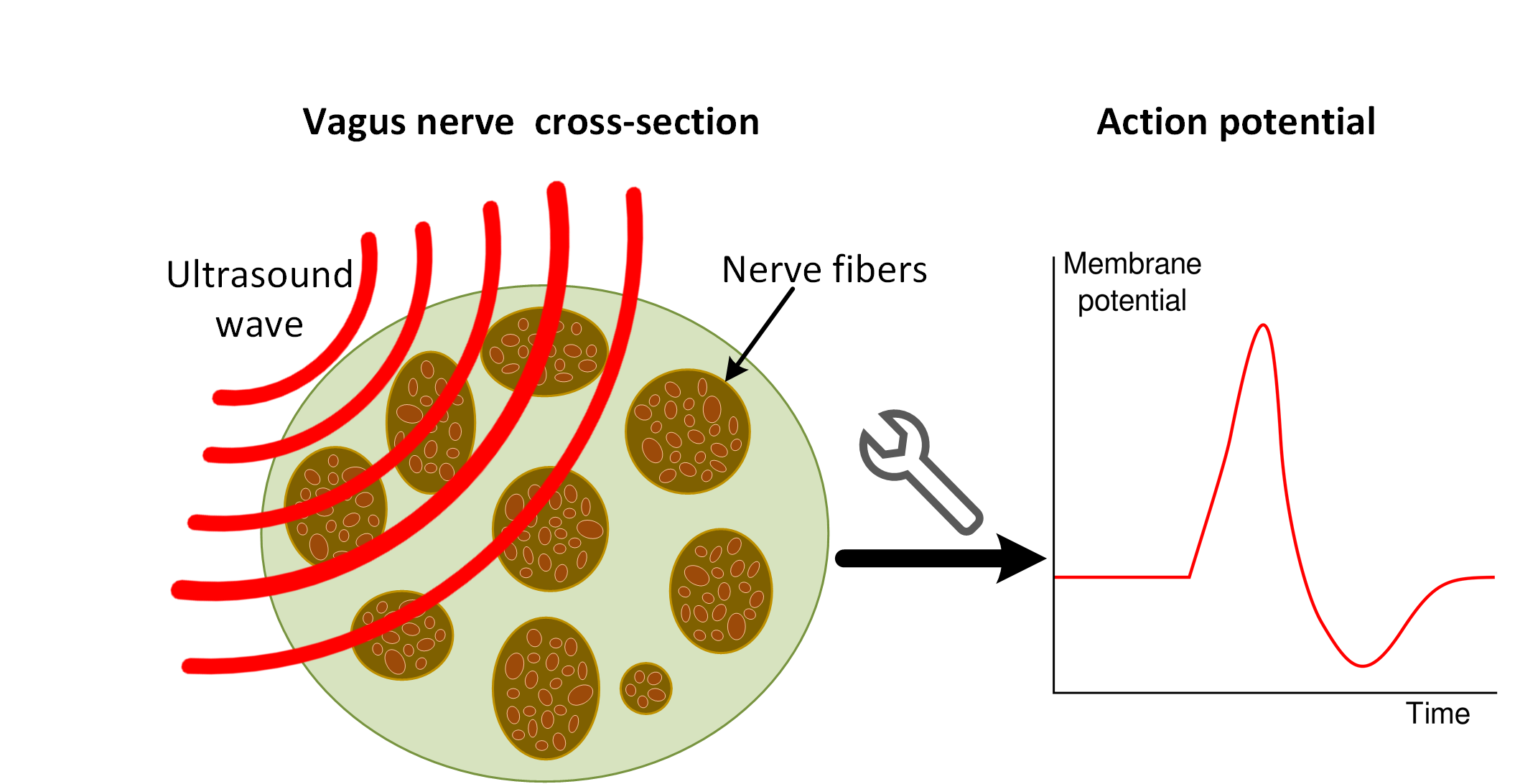MSc thesis project proposal
[2021] Activating neuronal networks using ultrasound. [Already taken]
In vitro neural circuitry formation as an animal-free model system is essential to study health and disease of the central nervous system. We have already developed protocols to differentiate embryonic stem cells into neural progenitor cells. However, the second differentiation step from neural progenitor cells into active neurons has been difficult to develop. One of the crucial steps that is missing in our protocols is to stimulate neuronal activity. In this project, you will develop a new workflow to use ultrasound in the activation of neuronal networks.
Low intensity focused ultrasound is an emerging non-invasive neuromodulation modality [1]. It has two clear advantages compared to electrical stimulation. First of all, ultrasound emitters achieve high spatial resolution (sub-mm) without the need for surgical implantation. This is enabled by unique properties of ultrasound propagation in soft tissue, such as low acoustic attenuation and scattering. Importantly, intensity levels and durations can be adjusted to induce activation or suppression of neuronal activity. Secondly, ultrasound modulation does not depend on the presence of specific ion channels in the neuronal cell membrane, whereas electrical stimulation is specifically tied to voltage-gated ion channel expression [1]. Developing neurons may not have the full repertoire of voltage-gated ion channels available, making ultrasound modulation a suitable method to induce activity during neuronal differentiation.
The goal of this project is to develop a micro-platform to investigate the effects of ultrasound on neuronal differentiation. This platform will consist of microscopic ultrasound transducers and driving electronics with a printed-circuit-board implementation, compatible with in vitro neuronal cell culture. The broader aim of the project is to infer the effects of different ultrasound wave parameters, such as intensity, pulse duration and pulse repetition frequency on establishing active neuronal networks in a dish.
[1] Fomenko, A., et al. (2018). "Low-intensity ultrasound neuromodulation: An overview of mechanisms and emerging human applications." Brain Stimulation 11(6): 1209
Assignment
1. Literature review of ultrasound neuromodulation and ultrasound transducers
2. Design and test of the ultrasound neuronal stimulation micro-platform compatible with neuronal cell culture apparatus
3. Investigate the effect of ultrasound on neuron differentiation
This work will be done under the supervision of Dr. Dimphna Meijer (TNW – Bionanoscience department) and Dr. Tiago Costa (EWI – Microelectronics department)
Requirements
Highly driven and enthusiastic MSc students from Microelectronics or Biomedical Engineering with interest in electronics and neuroscience should contact Dr. Dimphna Meijer (D.H.M.Meijer@tudelft.nl) and Dr. Tiago Costa (T.M.L.daCosta@tudelft.nl) and include a motivation letter and a list of courses attended.
Contact
dr. Tiago Costa
Bioelectronics Group
Department of Microelectronics
Last modified: 2022-01-27
